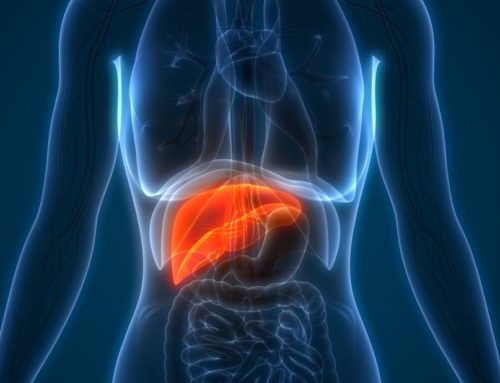Getting Started
Women have been breastfeeding their babies since the beginning of time. That doesn’t mean, however, that it’s something that just happens on its own. After all, you’ve never breastfed before, and your newborn has never eaten before, from a breast or otherwise. So before you pack your bag for the hospital — or get frustrated with breastfeeding postpartum — become acquainted with this important new job.
Nursing may be tough in the beginning, but with patience, effort, and lots of support, both of you will get the hang of it. The best part? Your baby will thrive on your milk and the cuddly closeness that breastfeeding offers. Trust us — and trust in your body!
Keep track of Baby’s feeding schedule.
It’s a good idea to try breastfeeding in the hospital as soon as you can, preferably with a nurse or lactation consultant on hand. Though a newborn knows instinctively how to suck, getting his lips and your nipple in the right position (called “the latch”) may take some trial and error: The nipple may slip out of baby’s mouth, he may not know what to do with this big thing in his face and cry, or he may just be too sleepy from the birth process.
Don’t get discouraged; the nurses and lactation consultants can help you position him properly. And even if you don’t get it right for several hours (or a whole day!), your baby won’t starve. He’s born with extra energy stores to get him through this phase.
Shop breastfeeding pillows.
Holding Your Baby
There’s more than one way to nurse a baby, but the best way is the one most comfortable for both of you. Here are three simple ways to cradle baby. Breastfeeding pillows and carefully folded blankets and towels can also help you prop baby in a comfortable position.
– The Cradle Hold:
Lay baby lengthwise across your abdomen, using one hand to support his head and the other his bottom.
– The Football Hold:
Place baby beside you face up and lengthwise. Lay him along your arm and guide his head to your breast. If you’ve had a c-section, you may find this hold more comfortable.
– The Lying-Down:
Hold Lay baby next to you in bed, with you on your right side, he on his left. His mouth should be at the same height or slightly lower than your nipples. With your free hand, adjust baby’s mouth toward the nipple closest to the bed and circle your other arm around him.
Newborn Meals
Every two hours or each time he cries, put baby to your breast to suck. To help him figure out where lunch is coming from, rub his cheek with your nipple or finger to get him to turn toward the breast.
Even if he’s not getting much milk in the beginning, the stimulation of his sucking will help your milk supply kick in. The first few times baby eats, each nursing session may be as short as five minutes or as long as 45. Once baby has worked out that you’re his source of milk and coordinated his latch, suck, and swallow, he’ll likely nurse for 20 to 40 minutes on each breast. If he’s been on one breast for a long time, it’s fine to break his latch and switch him to the other side.
Got Milk?
Baby’s first meal from Mom isn’t milk, it’s colostrum, a yellowish liquid rich in antibodies that boosts his immune system. Your real milk will come in a few days after you give birth. Don’t worry — you’ll know when it’s there! Your breasts may feel like they’re full of rocks, or that they’re about to burst (this is called engorgement). The good news is that your hungry baby can really help you out; the best way to relieve engorgement is to nurse often. Drink a large glass of water every time you nurse, eat well, and take your prenatal vitamins.
A major concern for new moms is whether baby is getting enough to eat; after all, you can’t count the ounces. If you hear and see your baby swallowing, he’s drinking. And if he’s filling plenty of diapers with urine and soft, yellow stools, at least eight a day, he’s getting nourishment. However, you should call your pediatrician if your baby exhibits these signs:
– Your baby stops feeding after 10 minutes or less.
– Your baby is frequently fussy and lethargic.
– Your baby’s skin is yellowing.
– Your baby’s stools are hard and dark.
More Breastfeeding Tips
Breast Friends
Theoretically, all you need to breastfeed is a breast. In reality, all of these products help ensure success.
– Medela Cure Swabs help heal sore spots (800-435-8316 or medela.com).
– Glamourmom’s Tank Top Nursing Bra is cute, comfy, and discreet (888-579-4666 or glamourmom.com).
– Gerber Breast Therapy Warm or Cool Relief Packs relieve engorgement and sore nipples (Babies “R” Us).
– The First Years Disposable Lanolin-Covered Pads replace sticky creams (thefirstyears.com).
– Peaceful Pea’s Nursing Nest makes it easier to nurse lying down — great for c-section moms (peacefulpea.com).
The Rules of Engorgement
Even if you nurse often, sometimes your breasts still get engorged. It’s hard for a baby to latch on to a rock-hard breast, so here’s how to relieve that painful feeling and get the milk flowing.
1. Stay cool. Applying ice packs or bags of frozen peas to your breasts is one way of easing the pain. Another tried-and-true remedy? Cabbage leaves! Keep a large head of green cabbage in your refrigerator or freezer. When you feel sore, peel off a leaf, stick it in your bra, and voila! An instant breast-shaped ice pack.
2. Take a warm shower. Heat promotes the flow of milk. You’ll lose a little milk in the process, but if you’re nursing regularly, there’s more where that came from.
3. Express yourself. Expressing a small amount of milk manually or with a pump can help soften things up so baby can latch on more easily.
4. Take it lying down. Lying on your stomach relieves the pull of gravity and for some women soothes the pain.
Nursing Shopping List
These supplies will help make nursing easier, which will increase your odds of nursing longer.
– Several supportive nursing bras. Look for styles without an underwire. The wire can dig into your milk duct and interfere with milk production.
– Lanolin ointment designed for nursing moms. It helps soothe sore nipples.
– A nursing pillow. These clever, inexpensive pillows save your back and help you position baby more easily.
– Nursing pads. You’ll have far less laundry to do if you place these absorbent pads in your bra to catch leaks.
– A breast pump. There are many kinds, from handheld to electric. All of them help relieve engorgement and may even allow you to prepare some reserve bottles so you can leave your little one with a sitter for a few hours.
Hey, That Hurts!
Your breasts have never been subjected to the jaws of a hungry newborn before, so for most moms, it hurts in the beginning. But cracked, bleeding nipples and constant pain are a signal that you need some help; your baby may not be latched on correctly. A lactation consultant can help correct your baby’s latch through positioning and exercises, and she can also offer advice on how to heal your nipples.
Sometimes nursing pain is caused by an infection called mastitis, when bacteria enters the breast and multiplies in a milk duct. If you have it, the infected area will become hot and red, and you’ll also suffer flulike symptoms. Nursing, safe antibiotics, and warm compresses help heal the infection.
Originally published in American Baby magazine, August 2004.
All content here, including advice from doctors and other health professionals, should be considered as opinion only. Always seek the direct advice of your own doctor in connection with any questions or issues you may have regarding your own health or the health of others.
Source: Parents.com





